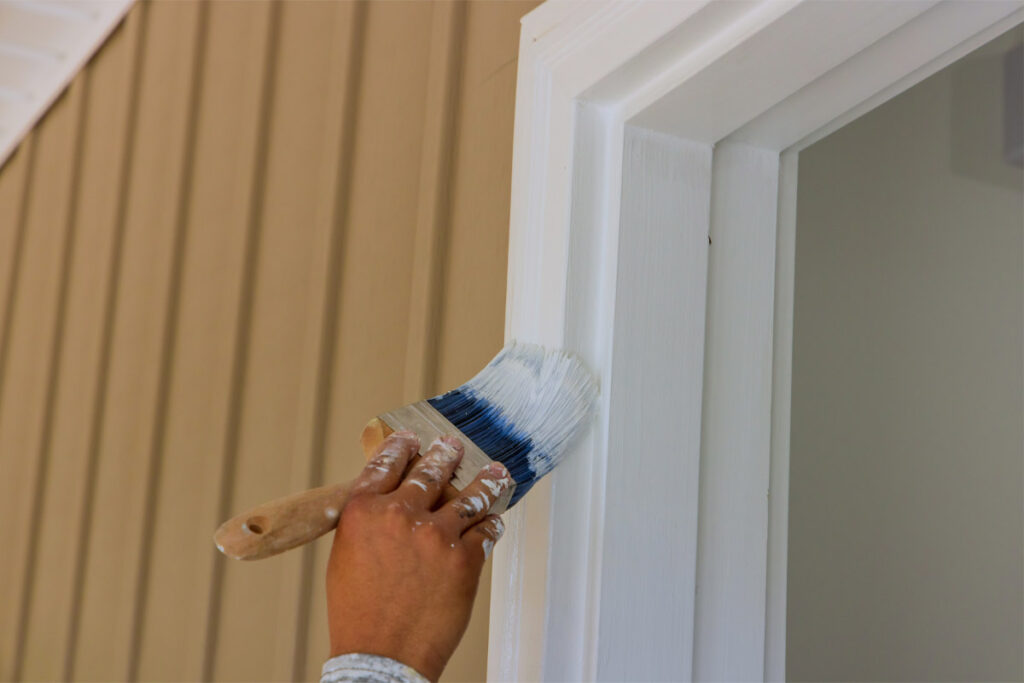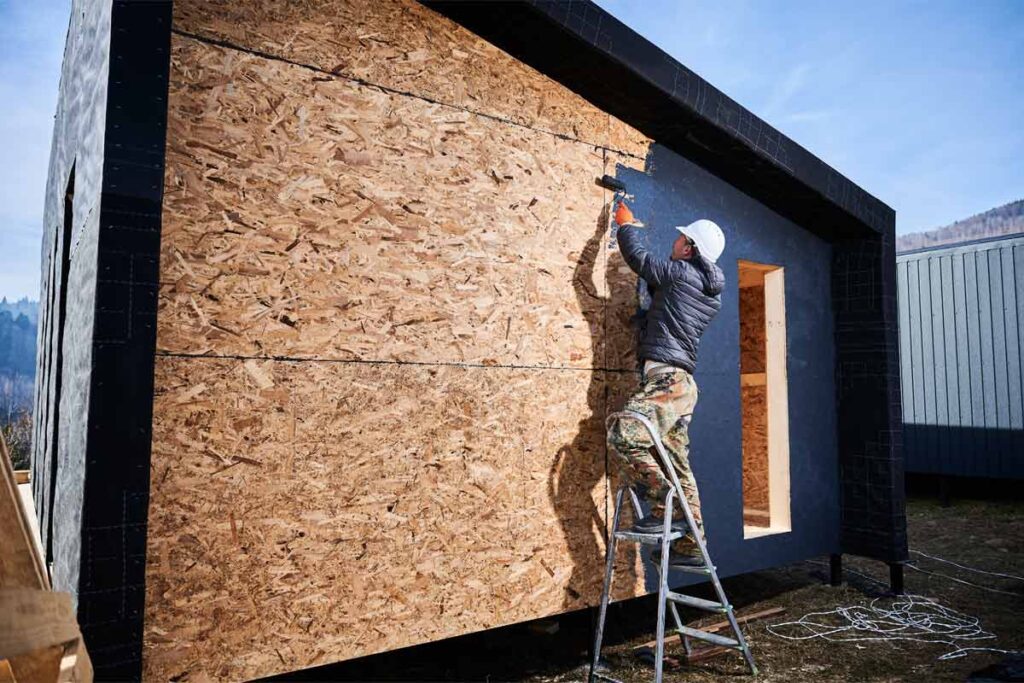A fresh coat of paint can completely transform the way your house looks from the street. It not only hides years of wear but also protects your home against harsh weather and natural ageing. A professional-looking paint job improves curb appeal, increases property value, and helps you take pride in your home’s appearance. If you’re ready to give your property a true facelift, these 12 exterior painting tips will guide you toward a flawless and long-lasting finish.
Why Exterior Painting Matters
The condition of your home’s exterior is the first thing people notice. Faded, peeling, or uneven paint can make even the best-kept property look neglected. On the other hand, a new paint job gives your house a sharp and inviting look that reflects pride of ownership.
Beyond appearances, exterior paint also acts as a protective barrier. It shields wood, brick, and siding from moisture that can lead to rot or mould. Quality paint also defends against sun damage, preventing fading and cracking that occur over time.
There’s also a financial side to this investment. A home with fresh, professional-looking paint has stronger curb appeal and a higher resale value. Even if you’re not planning to sell soon, maintaining your exterior with paint helps avoid costly structural repairs down the road.

Practical Tips for a Fresh, Lasting Paint Job
Painting the outside of your home takes more than just picking up a brush. The process involves preparation, choosing the right materials, and using proper techniques to get a result that looks professional. Below are 12 tips that will help you achieve a clean, durable finish that makes your home stand out.
- Inspect and Repair Surfaces Before Painting
The first step is to carefully check your home’s siding, trim, and other exterior surfaces. Look for cracks, rotten wood, mould growth, or peeling areas that need attention. Painting over these issues won’t solve the problem—it will only hide it temporarily. By repairing and sealing any weak spots, you create a strong foundation for the paint to stick and last longer.
- Wash the Exterior Thoroughly
Paint won’t adhere to dirty or greasy surfaces. Dust, mildew, and chalky residue can cause the paint to bubble or peel soon after application. Power washing is an effective way to clean the exterior, but a bucket of water with soap and a stiff brush can also do the job. Once the surface is fully cleaned and dried, your paint will go on smoother and look more professional.
- Remove Old, Flaking Paint
If old paint is chipping away, it must be removed before applying fresh coats. Scraping and sanding help create a smooth transition between bare surfaces and areas with older paint. This step also prevents new paint from peeling off in patches. Taking the time to strip away flaking paint makes a big difference in how long your project will last.
- Choose the Right Weather Conditions
Timing your painting project around the weather is crucial. Hot, direct sun can cause paint to dry too quickly and leave visible brush marks. Cold or wet conditions can prevent it from drying at all, leading to streaks and uneven colour. The best results usually happen on mild, dry days when temperatures stay consistent for at least 24 hours.
- Protect Landscaping and Fixtures
Your yard and fixtures are just as important as your walls. Cover plants, windows, light fixtures, and outdoor furniture with drop cloths or plastic sheets to prevent accidental splatters. It’s much easier to protect these areas beforehand than to clean paint out of shrubs or scrub it off glass later. This small step keeps your work neat and your surroundings safe.
- Use High-Quality Exterior Paint
The paint you choose has a direct effect on how long your project lasts. High-quality exterior paints are designed to resist fading, cracking, and peeling even in harsh weather. They also provide richer colour and stronger coverage, which means fewer coats are needed. Although premium paint costs more upfront, it saves you money in the long run by reducing the need for frequent repaints.
- Select Proper Colours for Curb Appeal
Colour choice can change the personality of your home. Neutral tones like grey, beige, or white tend to be timeless and appealing to most people, while bolder colours can make a home stand out. If you’re planning to sell, safe shades will appeal to a wider range of buyers. However, if you’re painting for your own enjoyment, don’t be afraid to add a splash of personality to your front door or shutters.
- Prime Before Painting
A primer creates a clean, uniform surface for the paint to adhere to. It’s especially important if you’re painting over bare wood, metal, or making a major colour change. Primer also blocks stains and prevents them from bleeding through the new coat. By taking this step, you’ll ensure that your finish is smooth, vibrant, and durable.
- Use the Right Tools and Equipment
Good tools make a noticeable difference in both quality and efficiency. Brushes are best for trim and detailed edges, while rollers or sprayers cover larger areas more quickly. Using low-quality brushes or worn rollers can leave streaks or uneven layers. Investing in proper tools ensures the paint goes on evenly and looks professional.
- Apply Paint Correctly
How you apply the paint matters just as much as the preparation. Start at the top of the house and work your way down to avoid drips landing on already-painted areas. Always apply two thin coats instead of one thick layer, as this helps the paint dry evenly and prevents cracking. Taking your time with even strokes will give the project a polished, long-lasting finish.
- Pay Attention to Details and Trim
Small details often make the biggest impact on curb appeal. Painting trim, doors, and shutters with care can elevate the overall look of your home. Consider using a slightly different shade or finish for these areas to create contrast. By paying attention to the finishing touches, your house will look complete and well-styled.
- Maintain Your Painted Exterior
Even the best paint job won’t last forever without upkeep. Check your exterior at least once a year for chips, cracks, or fading. Addressing small touch-ups right away prevents bigger repairs and keeps your home looking sharp. Regular maintenance ensures that your investment in exterior painting continues to pay off for years.
Common Mistakes to Avoid When Painting Your Home’s Exterior
Even with careful planning, homeowners often make mistakes that affect the final result. Being aware of these errors can help you avoid frustration, extra costs, and a paint job that doesn’t last. Here are the most common pitfalls and why they matter.
- Skipping Surface Preparation
Painting without properly cleaning, scraping, or repairing surfaces leads to uneven coverage and peeling paint. Dirt, mildew, or old flaking paint can prevent new paint from adhering correctly. Taking the time to prep surfaces ensures a smooth, long-lasting finish.
- Using Low-Quality Paint or Tools
Cheaper paints may save money initially but often fade, crack, or peel sooner than higher-quality options. Low-quality brushes or rollers can leave streaks or clumps, making the job look unprofessional. Investing in premium materials improves durability and overall appearance.
- Ignoring Weather Conditions
Painting in direct sunlight, freezing temperatures, or damp conditions can ruin even carefully applied paint. Extreme heat can cause brush marks and uneven drying, while cold or wet surfaces prevent proper adhesion. Choosing mild, dry weather ensures a consistent and smooth finish.
- Rushing the Painting Process
Skipping steps or applying thick coats too quickly reduces the paint’s lifespan and appearance. Each layer needs adequate drying time to bond properly with the surface. Patience and proper timing prevent peeling, streaking, or uneven colour.
- Neglecting Details and Trim
Focusing only on large surfaces while ignoring trim, shutters, and doors leaves your home looking unfinished. Small areas add contrast and polish when painted carefully. Paying attention to these details enhances overall curb appeal and gives a professional look.
Frequently Asked Questions
- How often should I repaint the exterior of my home?
The frequency depends on the type of paint, surface material, and exposure to weather. Most homes require repainting every 5–10 years. Regular inspections can help determine the optimal timing before visible wear occurs.
- Can I use the same paint for both trim and siding?
While it is possible, trim often requires a more durable or glossy finish to resist wear and accentuate details. Siding usually benefits from a matte or satin finish that hides imperfections. Choosing the right paint type for each surface ensures better durability and aesthetics.
- Can exterior paint prevent termite damage?
Paint does not prevent termites, but it can help protect wood from moisture that attracts pests. Maintaining a well-sealed, painted exterior reduces the risk of rot and termite infestation. Regular inspections remain crucial for pest prevention.

Transform Your Home with a Trusted Painting Contractor in Toronto
If you want lasting results without the hassle, hiring a professional painting contractor in Toronto is the best choice. At Gil Painting, we specialize in exterior projects that combine quality, durability, and curb appeal. Our team uses proven techniques and premium products to deliver a flawless finish every time.
We understand that your home is your biggest investment, and our goal is to make it stand out beautifully for years to come. Instead of worrying about weather conditions, prep work, or tricky details, let us handle everything with precision and care. Book your consultation today at 647-998-4164 and see how our painting contractor in Toronto can bring your vision to life.


